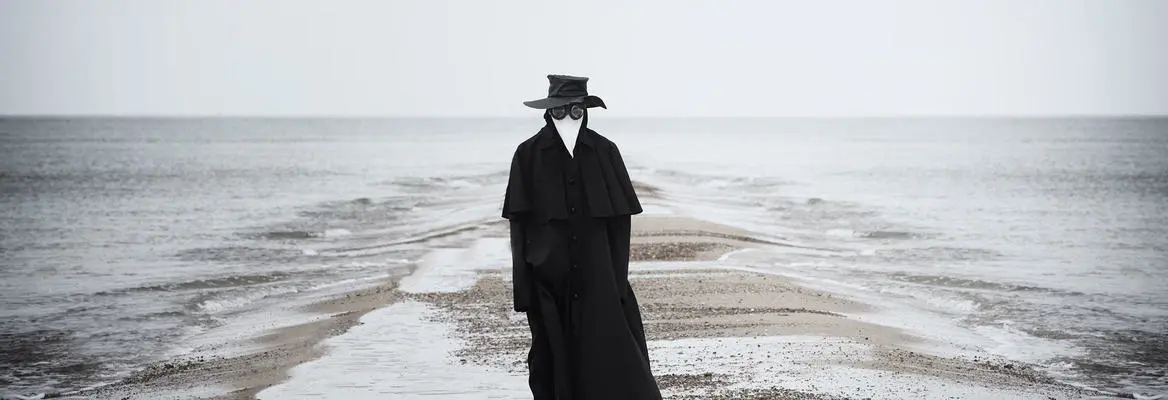There have been as many plagues as wars in history; yet plagues and wars take people equally by surprise.Albert Camus eerily familiar tale of a town in plague lockdown can show us how to preserve hope amid the prolonged suffering of a pandemic.
Albert Camus’ The Plague almost reads as a contemporary account. The denials and delays of public authorities in responding, the shortage of vital medical supplies, the overcrowding of hospitals—Camus saw it all with uncanny clarity. Moreover, he understood how pandemics can harm not just the body, but also the spirit.
One of the worst things about the plague is that it seems never-ending. This may seem like an obvious statement, but the point is significant. A night watchman says he wishes the city had been hit with an earthquake instead of the plague. “A good bad shock, and there you are! You count the dead and living, and that’s an end of it,” the watchman says. Earthquakes, tsunamis, landslides, and other similar natural disasters—as horrific as they are—have one saving grace: they end quickly. They have a clearly defined ending, from which survivors can grieve and move on.
Each day of the plague, on the other hand, brings a steady drip-drip of new deaths. The plague causes a different kind of loss as well: prolonged separation from loved ones who were out of town when the quarantine took effect. Fears that the plague could last a year or even longer fuels uncertainty about when a reunion will be possible. The townspeople begin to despair of a better future and decide it’s easier to just stop thinking about it. They become like “wandering shadows” that “drifted through life rather than lived,” tormented by “sterile memories.”
Despair hasn’t yet become habitual when the loss still hurts because you continue to hope for reunion.
The plague stole the simpler pleasures of life as well. Not only are the residents of Camus’ fictional city of Oran barred from travel, they can’t even leave for the nearby beach. Despite “all its nearness, the sea was out of bounds,” Camus says. Siestas and holidays “no longer invited” townspeople to “frolics and flirtation on the beaches.” To paraphrase Camus, part of the misfortune of the plague is its sheer monotony. Even the simplest of pleasures are snuffed out: one old man who once enjoyed spitting at street cats no longer can after the felines are euthanized (over concerns that they may be spreaders of the disease). “Plague had killed all colors, vetoed pleasure,” Camus writes.
Is there a way through the despair?
Camus suggests there is. He draws a distinction between despair and the “habit of despair,” in which people have become numb to their pain. Despair hasn’t yet become habitual when the loss still hurts because you continue to hope for reunion: your memory of your loved one has not lost its “fleshly substance.”
The only way to keep such memories alive is by doing what the townspeople avoided: imagining your beloved—both what they might be doing in the present and your potential future together. This may be more painful, but it is also the only way to truly live, Camus says. The alternative, according to Camus, is to become like one of the shadows that drifted aimlessly about the town.
This power of the imagination to keep love alive is spectacularly demonstrated through the character of Raymond Rambert, a Paris-based journalist who coincidentally had come to investigate the sanitary of the conditions before the outbreak and got trapped in the quarantine.















Join the conversation